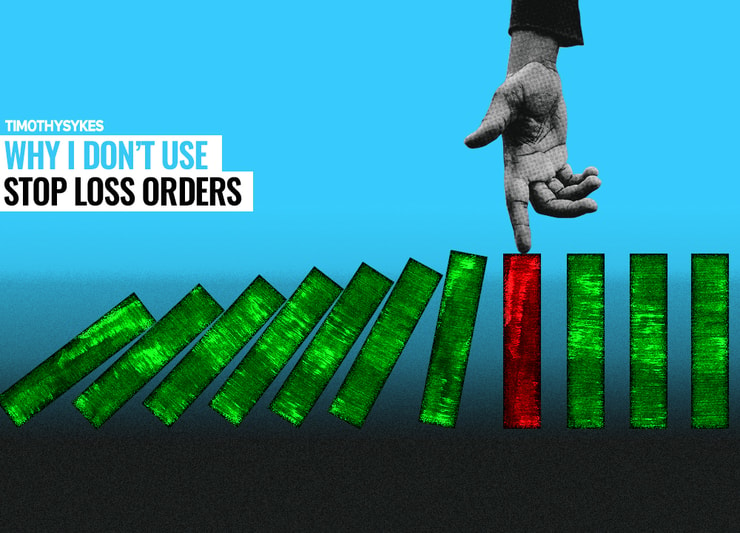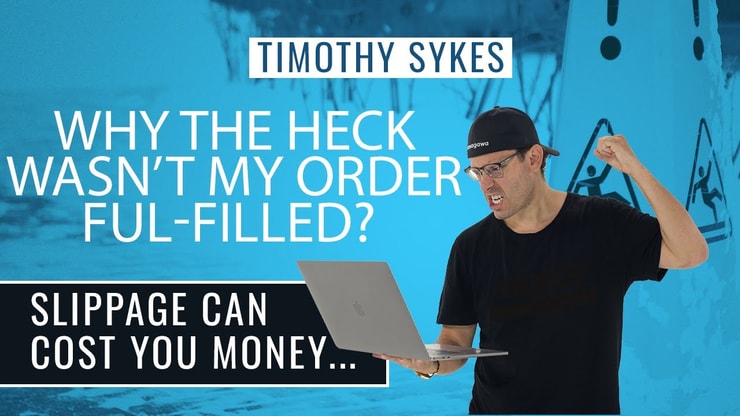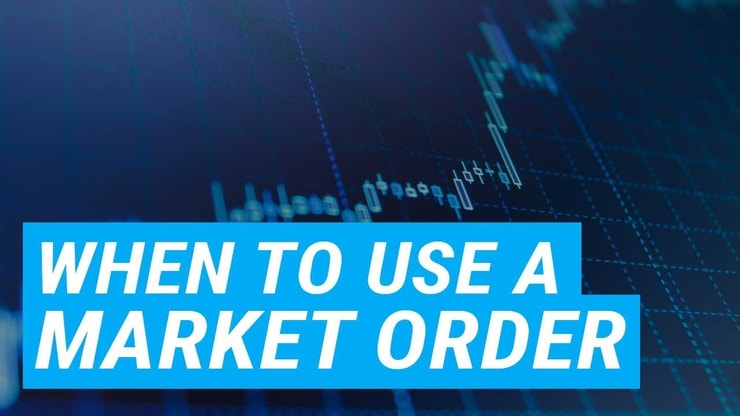There’s a myth about stop-loss orders that could decimate your trading account.
For newbies, I’ve heard it called death by a thousand papercuts. Even if you study, learn my patterns, and play by the rules, this one mistake could cost you. Over time, you could churn and burn your account, never gaining traction.
Or you could take a loss so big it’s difficult to recover. All because you followed the advice to set a stop-loss whenever you enter a trade.
I don’t use stop-loss orders. Ever. They’re NOT the smartest way to lower your risk as a trader. Keep reading for a full explanation.
Before that, you should understand the insanity of the current market…
Table of Contents
Why 2020 Is a Perfect Storm for Retail Brokers

2025 Millionaire Media, LLCRetail trading went crazy in the first half of 2020. A lot of people in lockdown suddenly had more time on their hands. They were spending less and looking to make more. Some lost their jobs and had no choice but to find a new way to make money.
And when college and professional sports also shut down it was like the perfect storm.
Day trading replaced sports betting as one of America’s favorite pastimes. The number of new accounts alone is staggering. Millions found their way to trading…
- In the second quarter of 2020, Charles Schwab added 552,000 new accounts.
- E-Trade added 329,000 in the first quarter and 327,000 in the second quarter.
- Robinhood has grown from one million users in 2016 to over 10 million today. The company added three million users in the first quarter of 2020.
- Fidelity opened a record 1.2 million new accounts in the first quarter.
It’s cool so many people are getting into trading. What’s NOT cool? That so many are risking so much without getting an education first…
It's sad how many people hate/have lost their jobs, but need to care for their families so they try trading. May/June rocked, July has been tough, but today was great as SO MANY people banked on CRAZY runners…let's do it again tomorrow, it's all about preparation + opportunity!
— Timothy Sykes (@timothysykes) July 30, 2020
If you’re brand new to trading and penny stocks, read my FREE penny stock guide.
Millennials and the Robinhood ‘Easy’ Button
It’s a simple formula. Find all the people who aren’t investing and make it easy. Robinhood figured out how to take it one dangerous step further.
Ironically, there are myths about millennials and finance. “They don’t trust financial advisors. They’re overly confident in their own ability to invest wisely.” Actual data disputes those myths.
But one thing Robinhood got right is that millennials like games. And we can be impulsive. I don’t think that’s unique to my age group. But there are more outlets for impulsive behavior. And with the pandemic, a lot of people need an outlet.
So they created an app that can encourage impulse trading … degenerate gambler mentality. It can make investing seem easy. One tap on your smartphone screen and you’re in a trade. You even get an idea of which stocks are ‘trending’ when you log in.
Robinhood made it more enticing by adding rewards to the game. When you sign up for Robinhood and link your bank account, you get a ‘free’ stock.
What could possibly go wrong?
Robinhood claims to be democratizing investing and finance. But it created a situation where amateurs have access to complex financial instruments. Even those who stick to buying and selling stocks have little idea what they’re doing.
It’s all too easy — and ‘free.’ Just see what’s trending and hit buy…
Meanwhile, the company has to make money. So how does a ‘free’ broker like Robinhood make money from trades?
The Truth About Payment for Order Flow

2025 Millionaire Media, LLCPayment for order flow (PFOF) isn’t new. It’s been happening for years with all major brokers. What is it?
When a retail trader puts in an order, the broker passes it along to a market maker. Market makers pay a tiny percentage per trade back to the broker. Again, nothing new. All brokers do it to some degree. It assures the trade gets executed.
Keep in mind that your broker should find the best possible execution for your trade. In 2019, Robinhood got fined for best execution violations. The company claims to have fixed the problem. I don’t know if they have. And I don’t care. I use these brokers. It’s not that I love them — they just suck the least for me.
So what’s the big deal? What does all this have to do with stop-loss orders? PFOF is Robinhood’s main revenue stream. So it’s not just about getting trades done fast. It’s about getting as many trades done as possible so the company makes money.
Why You Should Avoid Stop-Loss Orders
A common piece of advice you find on the internet and in investing books is to set stop-losses. In theory, it makes sense. Say you buy a stock at $3.15. You’ve learned rule #1: cut losses quickly. So you set a stop-loss order at roughly 5%, or $3.
Sounds good, right? If the stock drops to $3, your stop-loss order gets triggered and your broker sells. You lose but also lower your risk of bigger losses. In theory…
The Risks of Setting Stop-Loss Orders
There are risks with setting stop-loss orders. And it’s how Robinhood made $90 million in the first quarter selling their order flow.
Newbies Set Stop-Loss Orders in the Same Places
One big problem is that so many newbie traders set stop losses at big round numbers.
Using the previous example, if you set your stop-loss at $3, you’ve joined a lot of traders. Why do so many traders choose the same numbers? Because it’s easy. They look at the chart, see the closest round number, and set their stop-loss there. Who cares if a 5% drop from $3.15 is actually $2.9925?
Also, a lot of traders set their stops at or around obvious support levels. If the stock has strong support at $2.95, you might think, “Oh, everyone will set theirs at $3. I’ll set mine at $2.95. I’m smarter than them.”
Too bad most of the traders who didn’t set their stops at $3 followed your lead and set theirs at $2.95.
So what’s the big deal? I mean, so a bunch of traders with stop-losses get taken out at $3 and a bunch more get taken out at $2.95. Either way, you’ve protected yourself, right? WRONG!
Here’s why…
Market Makers Can See Your Stop-Loss Orders
Most newbies place stops that are visible to market makers. So market makers move the stock to the stop-loss levels and take them out. Especially during low volume trading in the middle of the day.
Why would they do that?
Everyone’s in it to make money. Everyone. But one reason is so they can keep shares moving.
Taking Out Stops Increases Market Liquidity
If there’s no volume, the stock price can’t move. And if the stock price isn’t moving and no one’s buying or selling shares, nobody’s making money. The stock market favors liquidity. Remember, most of Robinhood’s revenue comes from payment for order flow. So they need the trades to keep happening.
The market makers also need the trades to keep happening. Everyone needs trades to keep happening. So the market makers take out stops.
More Trades Means Higher Revenue From PFOF
What happens when Robinhood customers make more trades? Yep, Robinhood makes more money.
And right now, it’s pretty crazy. Between Robinhood, Charles Schwab, E-Trade, and Fidelity, we’ve seen an increase of at least 5.4 million new trading accounts. That’s a conservative number.
At the same time, brokers have announced a huge increase in the number of managed trades. Has this had a big impact on the market at large? Probably not. The cash flowing into the stock market is tiny compared to institutional investors. But that doesn’t matter…
The point is that more trades are happening. And since so many of them are happening on Robinhood, the company is banking on newbies.
Which leads me to…
Why I NEVER Use Stop-Loss Orders

2025 Millionaire Media, LLCI want to be in control.
Let’s take the hypothetical example a step further. What triggers stop-loss orders?
The obvious answer is that the stock price drops to your stop level. But what if I told you the price doesn’t even have to drop there … Wait. What?
Check it out…
I’ve talked before about how traders paint the tape. They place a one-share order to make other traders believe the stock is moving to that price. Watch level 2 for about 10 minutes and you can see it.
With stop-loss orders, the stock doesn’t even need to sell at your stop level. If anyone offers the stock at your stop level and it becomes the ask, it triggers your stop-loss.
So if someone wants to take out stop-losses, all they need to do is paint the tape. Let that sink in…
So what if you set your stop at $2.95 because you knew everyone else would set at $3? Then the stock busts through $3 but a huge buyer comes in at $2.98. Your stop could still trigger if there’s an offer of a single share at $2.95.
Sadly, this happens often. The stock runs right back up and you got stopped out of what should’ve been a profitable trade.
Which explains…
More Breaking News
- BlackBerry Stock: Is it Poised for a Rebound?
- Boeing’s Unforeseen Surge: What’s Fueling It?
- B2Gold’s Market Movements Explained
Why Robinhood Can Be Dangerous
Most traders set stops that trigger market orders. Once it’s triggered, a market order to sell your shares enters the order book.
What if the stock is tanking?
Your stop gets triggered, so now it’s a market order. If a lot of stop losses go off at the same time, your order could get filled far from your stop-loss order. We’re not talking a little slippage. Instead of selling at $2.95, your order could fill at $2.75, $2.65 … or even $2.25 per share.
Slippage is part of trading. But you don’t want to get caught in a huge panic when stops get taken out. If you get caught, you NEED to be in control so you can find the best price to get out.
Check out this video on slippage…
Why The Heck Wasn’t My Order Filled? Slippage Can Cost You Money…
Like I said in the video, never use market orders. And when you’re in a trade, don’t think about how much money you’re going to make. Think in terms of capturing the meat of the move.
Here’s another video to further explain it…
Why You Should Never Use a Market Order
The point is … with stop-loss orders you think you’re in control, but you’re not. You think you’re safe, but you’re not.
Robinhood Preys on the Uneducated Amateur
Are there people making money using Robinhood? Probably. But I’d guess that long term, they won’t be able to grow their accounts. It’s too easy to trade and too much like a game. And Robinhood is banking when market makers take out stop-loss orders.
What’s the answer?
Educate Yourself
For me, it’s obvious. Trading doesn’t have to be hard, but you do have to be prepared. Robinhood has it all wrong … there’s no ‘Easy’ button.
This is a great place to start…
- Read “The Complete Penny Stock Course” by my student Jamil. It gives you all the basics in an easy-to-understand format.
- Also, watch my DVD “How To Make Millions.” It’s the most comprehensive trading DVD I’ve created, and 100% of profits go to charity.
- If you’re ready to focus and be dedicated … if you really want to go for freedom… Apply for the Trading Challenge.
- Or, if you’re not ready for that level of commitment, subscribe to PennyStocking Silver.
The stock market is a battlefield. You MUST prepare for battle. I want to be the mentor to you that I never had, but it’s up to you to take action today.
What to think of stop-loss orders after reading this post? Comment below, I love to hear from all my readers!











Leave a reply